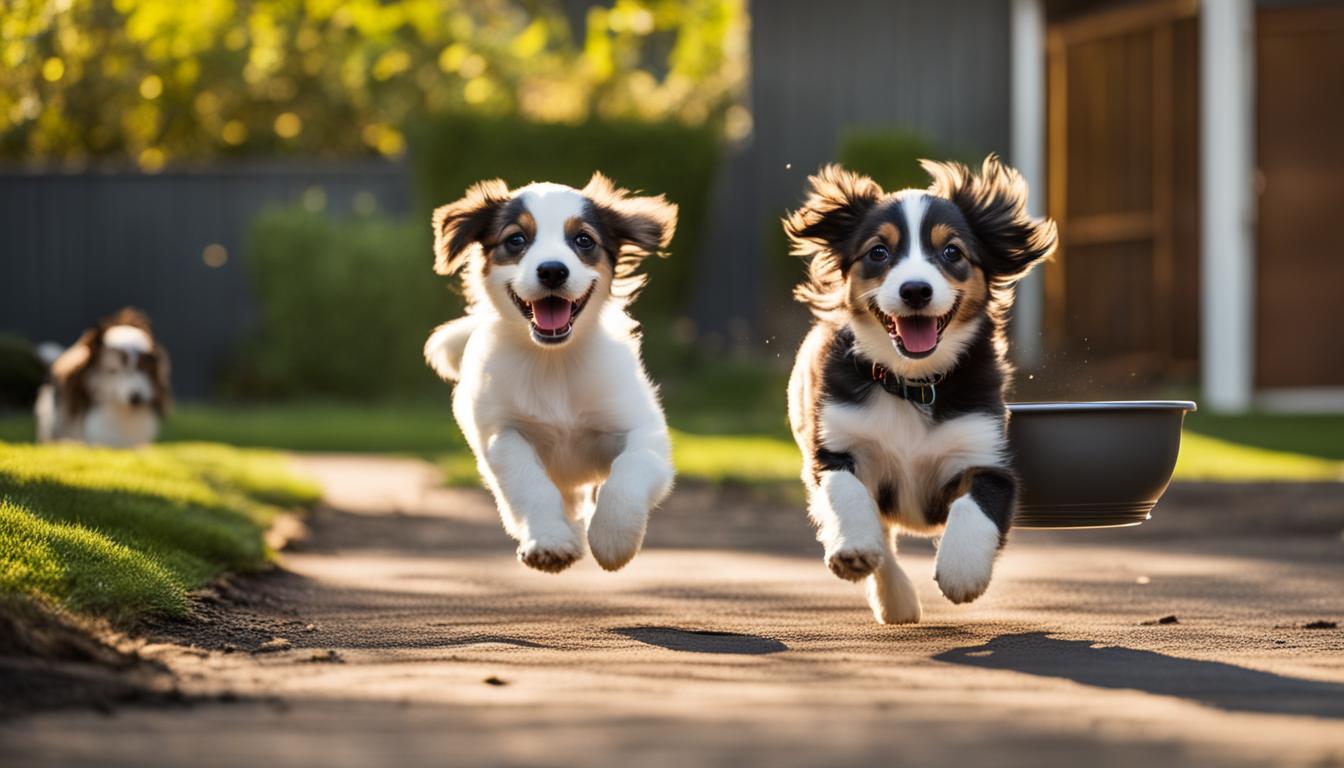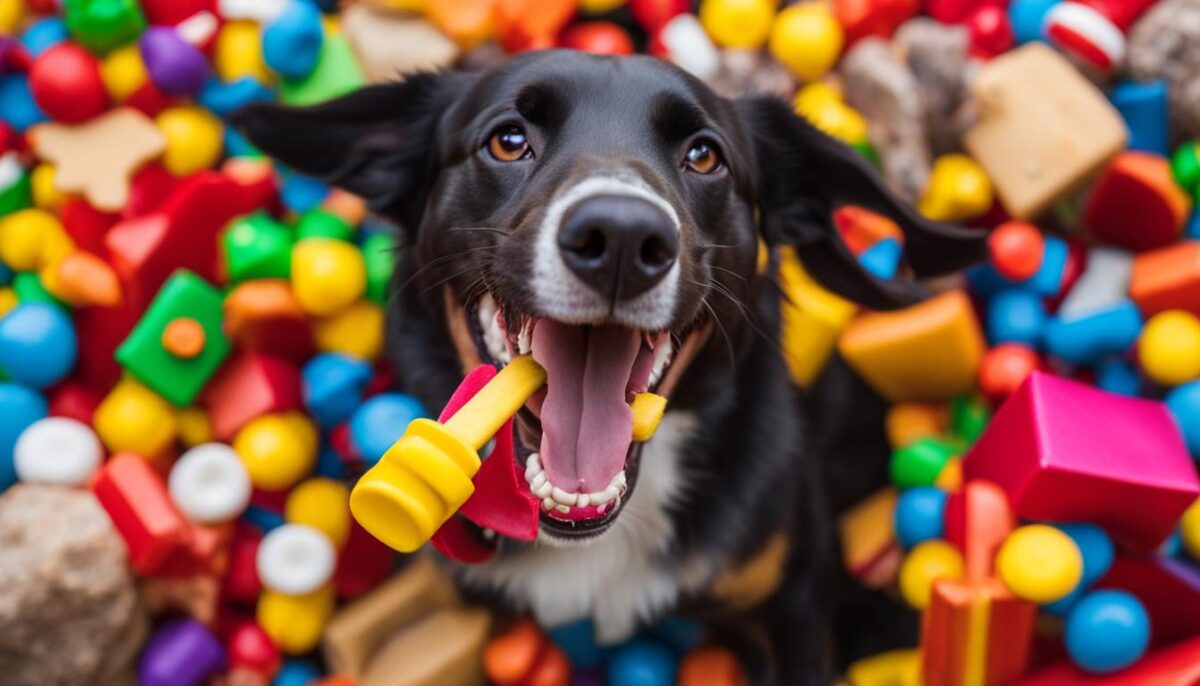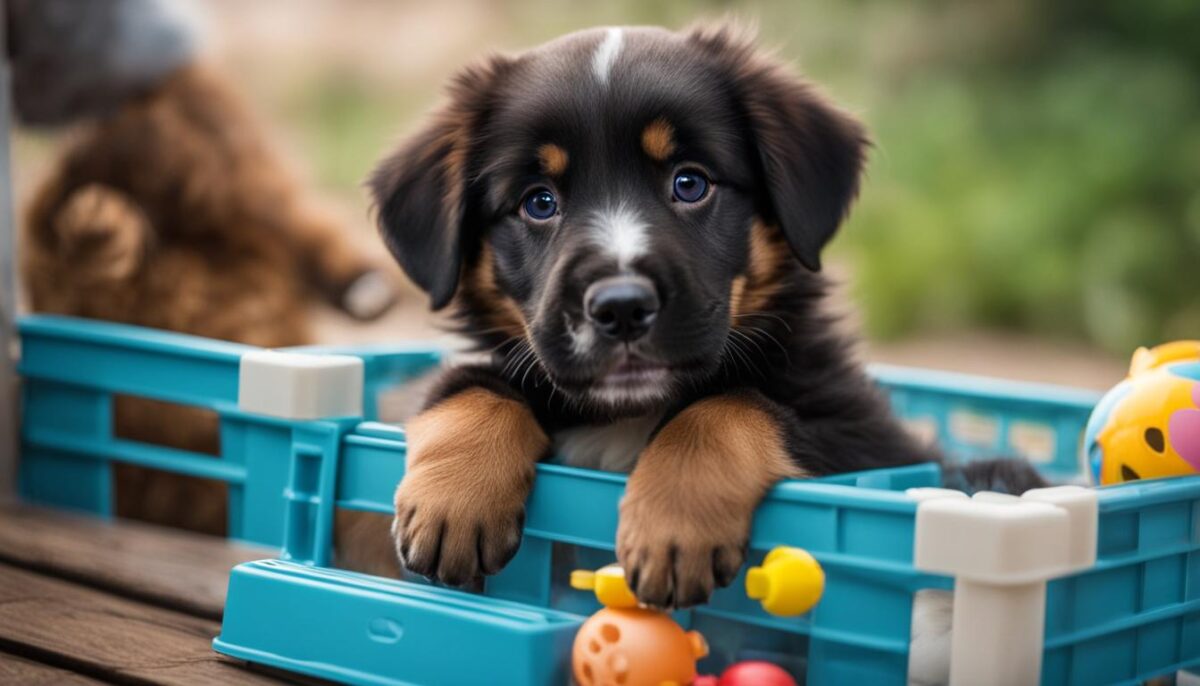When you bring a new puppy home, teaching them where and when to go potty is a big job. It’s called potty training, and it means showing your puppy the right place to do their business. You might think it’s tough, but don’t worry! With some patience and these simple steps, you’ll learn how to housebreak your dog and help them learn good dog bathroom habits.
Your new furry friend will need to go out a lot at first—even in the middle of the night! But it’s all part of the learning. Just remember, when your puppy does the right thing, a little treat and some happy words can make a huge difference. They’ll feel super proud and understand that they did something great!
Key Takeaways
- Potty training is all about patience and help from you.
- Teach your dog good bathroom habits with treats and kind words.
- Having a schedule helps your puppy know when it’s time to eat, play, and potty.
- Be ready for some accidents—it’s how puppies learn!
- A treat right after your pup goes potty outside shows them they did well.
- Picking up your puppy’s water dish before bed means fewer nighttime trips outside.
Understanding Your Dog’s Natural Instincts and Schedule
Just like you, dogs love a good routine. It helps them know when it’s time to eat, play, and go potty. Keeping to a schedule is super important—it’s like the secret handshake for a happy, well-trained pup!
Recognizing the Importance of Consistency
How cool would it be if your puppy could tell time? They sort of can! Dogs have strong instincts that work like an inner clock. A regular schedule helps them predict what’s next, and that makes them feel safe and happy. Stick to the same times for meals, play, and potty, and watch your puppy become a pro at daily life.
Creating a Feeding and Potty Schedule
Did you know? When you feed your puppy can help them learn when to go potty. If you feed them like clockwork, they’ll need to go potty like clockwork too! A feeding schedule for dogs is like magic for potty training. And remember to take them out after naptime and playtime, too. This helps create a consistent potty routine they can understand.
Accommodating Your Dog’s Age and Bladder Capacity
Little puppies are still learning how to control their bladder. Think of them like doggy babies who need to go potty more often. If your puppy is 3 months old, they can hold it for about 3 hours. Keep that in mind, and you’ll be ready to help them when nature calls. Patience is key, and so is remembering that puppy bladder control gets better with age.
Setting Up For Success: The Right Spot and Timing
Want to make housebreaking easy for your pup? The secret is picking the perfect spot for them to go potty and taking them there at the right times. Let’s learn how!
Choosing a Consistent Bathroom Spot
Find a special dog potty area outside just for your puppy. Each time you and your puppy visit the spot, say the same word or phrase. By doing this, your puppy will start to think, “Ah, this is where I go potty!” Pretty smart, huh?
Timing is Key: Frequency of Potty Breaks
Puppies need to go outside a lot! Make sure you take them out at least every two hours. You should also take them out when they wake up, after they play, and after they eat or drink. Frequent potty breaks help your puppy learn their bathroom routine, so no accidents happen inside your home.
By sticking to these simple steps, you’ll help your puppy know where and when it’s time for a potty break. That’s a big win for both of you!
Positive Reinforcement: Rewards and Praise
When it comes to training your furry friend, nothing works quite as well as giving them a pat on the back. Saying “good job” to your puppy and giving them a tiny treat helps them understand they did something right. This way of training is called positive reinforcement, and it’s really powerful. Let’s dive into how and why it works!
The Impact of Immediate Praise
Imagine you’ve just taken your puppy outside. They’ve found their spot and done their business, and now they’re looking up at you. This is your moment! Right away, give them a cheer and a cuddle. You could even say things like “Good dog!” or “Well done!” By doing this praising your puppy right after they finish pottying, they’ll link going outside with happy vibes from you. And that means they’ll want to do it again!
Choosing the Right Treats for Training
Not all treats are created equal when it comes to training treats. Since you’ll be giving out these goodies quite often, you’ll want to make sure they’re small and good for your puppy’s tummy. Pick treats that are made just for puppies—small enough to munch quickly and easy for them to digest. Each time your pup goes potty outside, give them one of these special little rewards for dogs to celebrate a job well done!
Now, what if an accident happens and your pup goes potty inside the house? It’s okay; stay calm and clean it up without fussing at them. Use a cleaner that gets rid of the smell so they won’t think of going there again. Remember, scolding doesn’t help, but cleaning quietly and giving lots of love and snacks when they do it right is the secret to a potty-trained pup!
How to House Train a Dog with Crate Training Techniques
Did you know that a crate can be your best friend when it’s time to teach your furry buddy where to potty? Let’s talk about how a special spot for your dog to chill out can help keep your home clean. It’s all about making sure your dog has a cozy crate that feels like their very own den.
Introducing Your Dog to the Crate
First things first, show your dog their new crate gently. Make it comfy with a soft blanket. You can even put in a toy or a treat to make it feel like home. Soon, your dog will think of the crate as their happy, safe space. This is because dogs have a dog’s den instinct, meaning they love having a space just for them!
Understanding the Role of Crates in Potty Training
Crate training is great because pups usually don’t like to make a mess where they sleep. The key is getting the puppy crate size just right. If it’s too big, your dog might think it’s okay to use one corner as a bathroom. But if it’s just enough for them to stand up, turn around, and lie down, they’ll wait until you take them out to go potty. That’s house training with crates. Listen for little whimpers or scratches—that means, “I gotta go!” and it’s your cue to take them to their potty spot outside.
There you have it! Crates aren’t just beds—they’re a super-smart way to help your dog learn not to potty inside your house. Plus, they give your pooch a place they can call their own.
Handling Challenges: Dealing with Accidents and Setbacks
Sometimes, even with the best plans, little mistakes can happen. Your puppy may have an accident inside the house. Don’t worry! Here’s what you can do to help fix the problem and teach your pup the right habits.
Cleaning Up Effectively
If your puppy makes a mess, it’s important to clean it up right away. Use a cleaner that gets rid of smells to make sure your puppy doesn’t want to go in that spot again. This is a big part of solving housetraining problems and cleaning dog accidents. Be quiet and calm when you clean, so your puppy doesn’t get scared or confused.
Adjustments in Training After Mishaps
If you catch your puppy getting ready to go inside, quickly but gently take them to their outdoor bathroom spot. If they finish going potty outside, tell them how good they are! This helps with adjusting dog training and dog behavior correction. Keep doing this, and soon, your dog will know that going potty outside is the right thing to do.
| Problem | What to Do | What Not to Do |
|---|---|---|
| Puppy has an accident in the house | Clean up with an odor-killing cleaner and take them outside | Don’t yell or scare your puppy |
| Puppy starts to squat indoors | Quickly carry them to their potty spot outside | Don’t ignore their signals or wait too long |
| Puppy doesn’t go potty while outside | Take them out again after a little while | Don’t give up and let them back inside too soon |
Remember, stay calm and keep teaching your puppy. Even when there are setbacks, it’s okay. With your help, your dog will learn the right place to go potty. Keep being patient and kind, and your puppy will get there!
Conclusion
Teaching your dog where to go potty is a big deal! Successfully house training your pup takes time and lots of love. Remember, your dog wants to make you happy, so when you’re patient and kind during dog potty habits training, you’re both on the path to success. Look for those little moments when your puppy gets it right, and give them a happy “Well done!” and maybe a tasty little treat. That way, they know they’re on the right track.
Like us, dogs love doing things on time. A regular eating and potty plan helps a lot. This patient dog training helps your puppy learn the rules, like when it’s playtime and when it’s time to go potty. Keep at it, and even if there’s a little mess to clean up now and then, don’t worry. A little clean-up and right back to the routine will work wonders.
In the end, knowing what your dog needs and helping them learn with a steady routine and rewards will make you both happier. Put in that effort, and before you know it, your puppy will learn just where and when to go potty. Thanks to your help and love, you’ll both enjoy a home that’s happy, clean, and mess-free!
FAQ
What are the first steps to house training my dog?
The first steps include setting up a consistent schedule for eating, playing, and potty breaks. You should also decide on a specific bathroom spot outside, and introduce a command or cue to help your dog understand where and when to go to the bathroom.
How can I help my puppy develop good potty habits?
Help your puppy by feeding them at the same times every day, taking them outside frequently, particularly after meals, wake-ups, and play sessions, and by using consistent words or phrases to signal bathroom time. Also, use treats and praises to reinforce good behavior.
What should I do if my puppy has an accident inside the house?
If your puppy has an accident indoors, avoid scolding them. Clean up the mess quietly using an odor-neutralizing cleaner and take them to their designated potty area if you catch them in the act. Remember, consistency is key, so continue to follow your established routine.
How often should I take my puppy outside for potty breaks?
You should take your puppy outside to their bathroom spot at least every two hours, as well as after meals, playtime, and naps. Be mindful of their age and bladder capacity, as younger puppies may need more frequent breaks.
What’s the best way to use positive reinforcement during house training?
Reward your dog immediately after they eliminate outside with treats and praise. Make sure the treats are small and suitable for their size. Be enthusiastic and consistent with your rewards to reinforce the behavior you want to see.
How do I crate train my dog as part of house training?
Introduce your dog to the crate gradually to make it a positive experience. Ensure the crate is the right size for them to be comfortable, and watch for signs like whining or scratching that indicate they need a potty break. Use the crate to establish a routine and prevent accidents in the house.
Can a consistent feeding schedule assist in house training my dog?
Yes, a consistent feeding schedule can certainly help with house training. Puppies usually need to go to the bathroom shortly after eating, so feeding your dog at the same times each day can create a predictable bathroom schedule.
How should I respond to setbacks during house training?
Stay patient and persistent. Clean up any accidents thoroughly and continue with the training routine. If mishaps occur, consider if the bathroom breaks are frequent enough or if there are any changes in your dog’s routine that need addressing.


